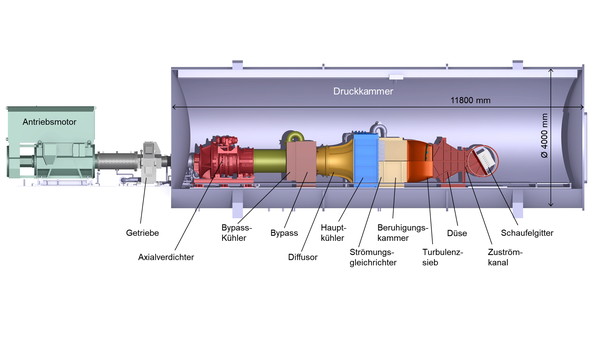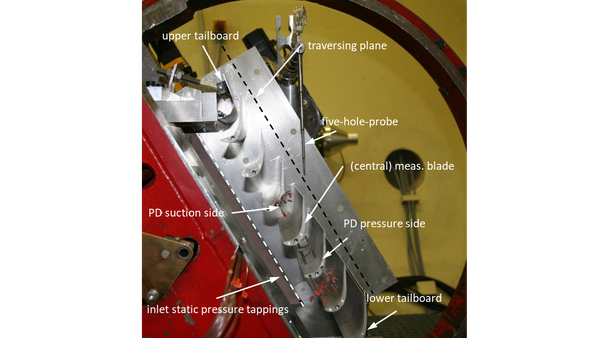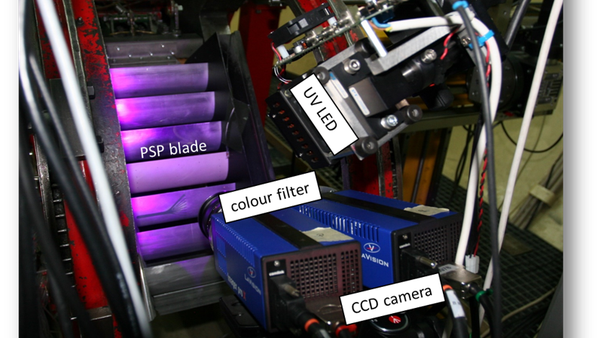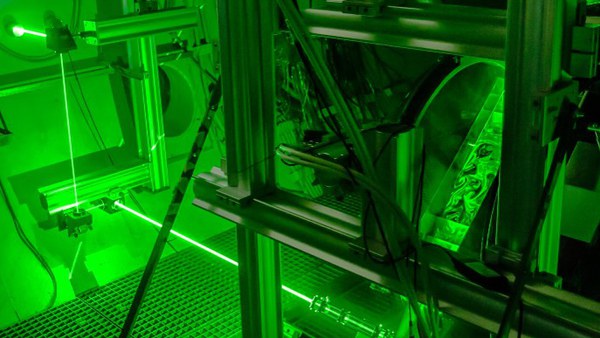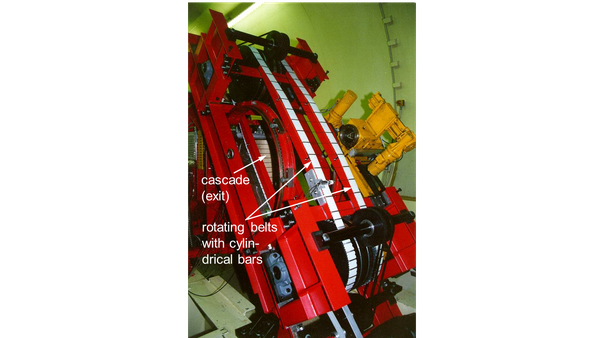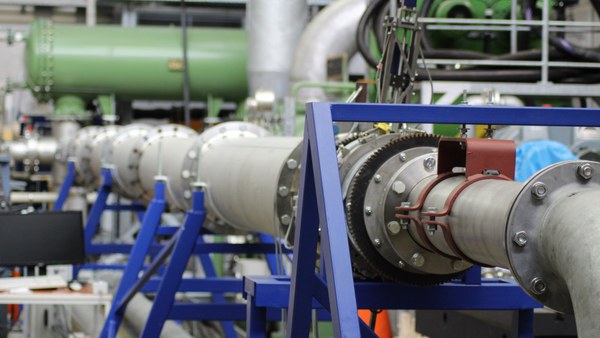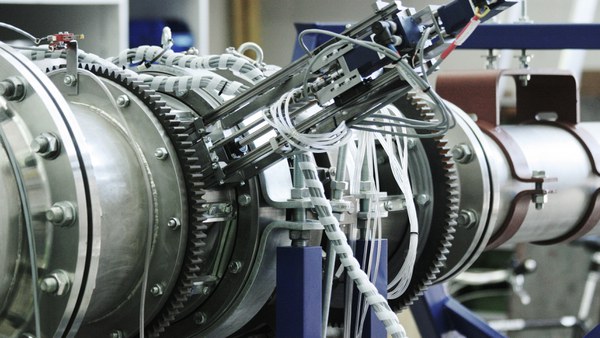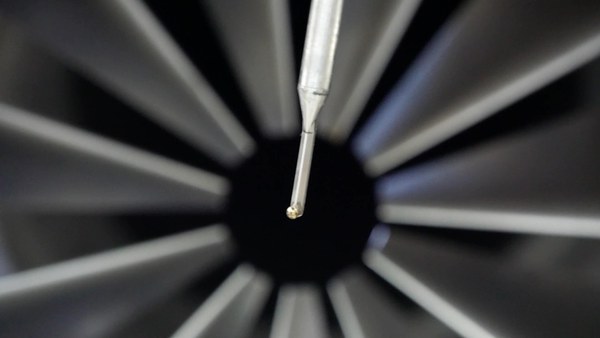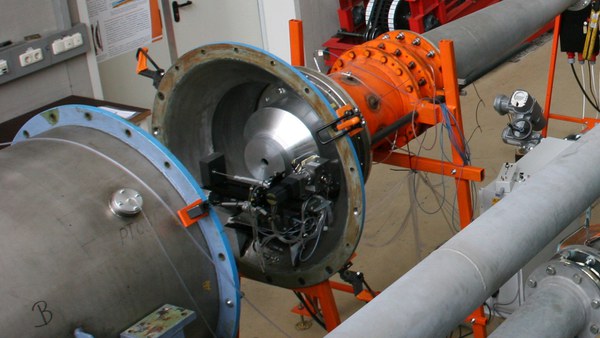For investigations on turbomachinery components, the Institute of Jet Propulsion operates the component test facility, which currently consists of three test rigs. The heart of the facility is the high-speed cascade wind tunnel (HGK), which was taken over from DLR Braunschweig in 1985 and has since been a significant part of the research work at the institute. The test stands at the component test facility are regularly modernized and expanded. In this sense, the multi-purpose wind tunnel was added in 2015, the HGK was thoroughly renovated in 2017, and the inlet guide vane test stand was built in 2018. The measurement technology used is also constantly being further developed to ensure that research work is up to date.
Optical Measurement Technology
Depending on the research task, additional optical measurement technology is increasingly being used for the area-based measurement of flow variables. Particle Image Velocimetry (PIV) can be used to measure velocity fields in the downstream area or within the blade cascade without contact. Pressure-sensitive paints (PSP) on the blades or sidewalls allow the pressure distribution to be measured on surfaces.
Variable Inlet Guide Vane Test Facility (ELA-P)
Inlet guide vanes, or swirl generators, are frequently used in turbo compressors for mass flow control at constant speed. With the aid of this variable guide vane, the flow approaching the rotor can be swirled in or against the direction of rotation, causing the relative inflow velocity and the mass flow to decrease or to increase.
In the variable inlet guide vane test facility, measurements of the flow at the inlet guide vane are possible in the lower subsonic range. For comprehensive investigations, in addition to the possibility of measurements by conventional pneumatic measurement technology, the corresponding accesses for optical measurement methods, such as pressure-sensitive colors and particle image velocimetry, are available.
